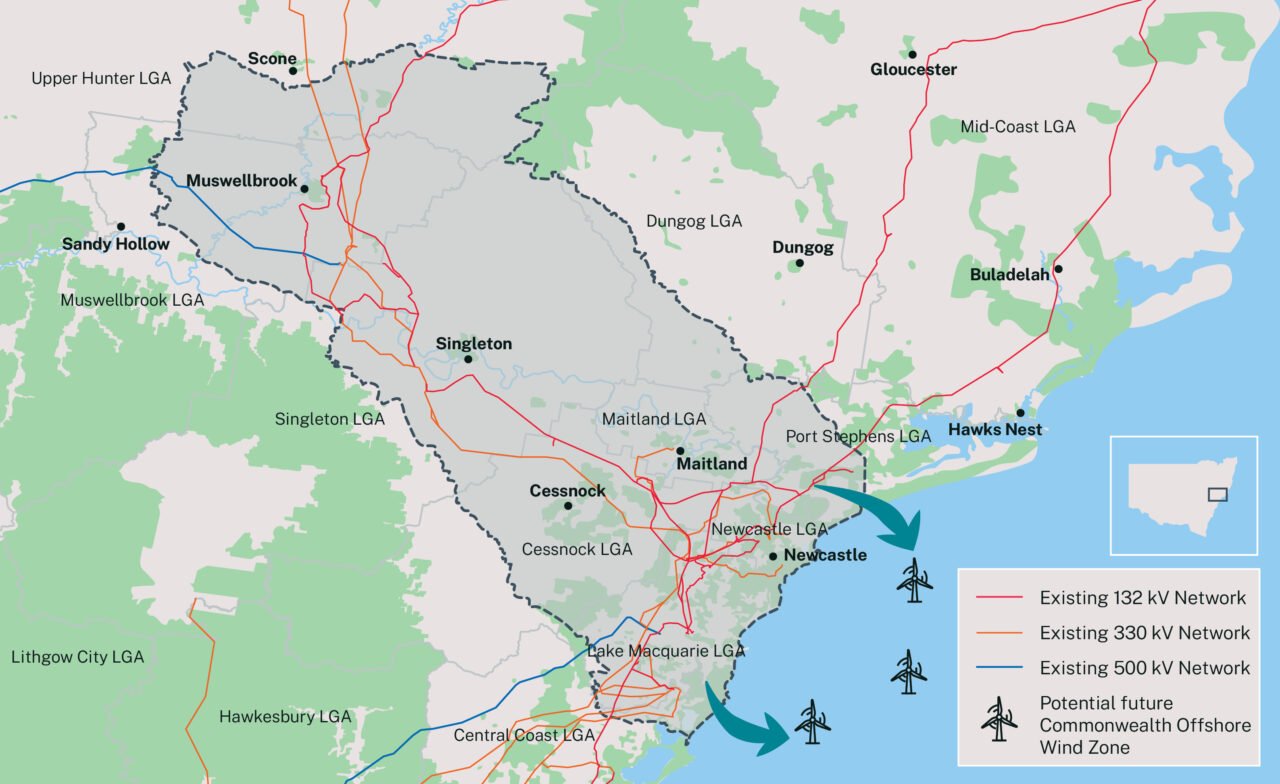
Renewable Energy Zones are large areas of land zoned specifically to host a mixture of large-scale renewable energy generation sources, enabling the transition away from dependence on fossil fuels, while also bringing investment into regional economies.
Most of Australia’s states are planning to have them, with Queensland recently announcing the development of 12 such facilities is underway, as reported by our colleagues at PV Tech.
Central-West Orana REZ
One of the two new battery projects approved is called Apsley, about 6km away from a township of the same name, in rural NSW. The 120MW/240MWh project will connect directly to a nearby existing transmission line, and in the words of its developer ACEnergy, “provide support to central NSW”.
It will charge from the electricity grid at off-peak times when energy is cheap and abundant, and then discharge when it is most needed, supporting stability of the grid network as well as matching supply to demand.
The project will be sited within NSW’s Central-West Orana REZ, which is a 20,000 hectare site chosen by the state government after a geospatial mapping exercise in 2018 to find optimal locations that had a combination of renewable energy resource potential, proximity to existing electricity network infrastructure. Consideration of how the REZ will interact with existing uses of land in the area was also accounted for.
The NSW claimed Central-West Orana REZ will unlock 3GW of renewable energy capacity by the middle of this decade, while bringing in AU$10 billion investment by 2030. Together with new infrastructure to take electricity from the REZ, energy storage will be a key part of optimising the zone’s value.
Hunter Central Coast REZ
The other project, Muswellbrook, is a 150MW/300MWh BESS proposed by developer Firm Power. It will be sited in the Hunter Central Coast REZ, which like Central-West Orana is in development through state authority Energy Corporation of New South Wales (EnergyCo).
It was also site-selected through geospatial mapping, undertaken in 2021. As the name implies, it is near to the coast, and therefore has potential to connect NSW to new-build offshore wind projects in a proposed Commonwealth Offshore Wind Zone.
The region of Hunter also offers land and infrastructure in the form of rehabilitated mines and thermal power plant sites, while the area is also expected to play host to a number of newer industries to the state like green hydrogen, ammonia and metals production.
A Registration of Interest (ROI) process run by the government in late 2021-early 2022 was responded to with proposals for more than 40 large-scale projects including 24 solar PV farms, 20 wind projects, a staggering 35 BESS projects and eight pumped hydro energy storage (PHES) projects.
“Giving these batteries the green light will play a critical role in securing reliable, renewable energy across NSW,” the state’s minister for energy Penny Sharpe said.
“The transformation of our energy system needs to occur as soon as possible. Batteries are not only critical to supporting our state’s transition to net zero, they will assist us to get there sooner.”
Colleague Paul Scully, minister for planning and public spaces, added that the BESS assets “will be used during peak power consumption times and provide backup during outages or extreme weather events reducing the need for costly distribution upgrades or emergency generators”.
In related news from New South Wales, the state will be home to Australia’s biggest approved BESS projects, the Waratah Super Battery, which the national Clean Energy Finance Council (CEFC) recently committed AU$100 million towards. The state meanwhile is hosting a tender through which 550MW of long-duration energy storage (LDES) procurements could be made alongside 950GW of new generation procurements.

